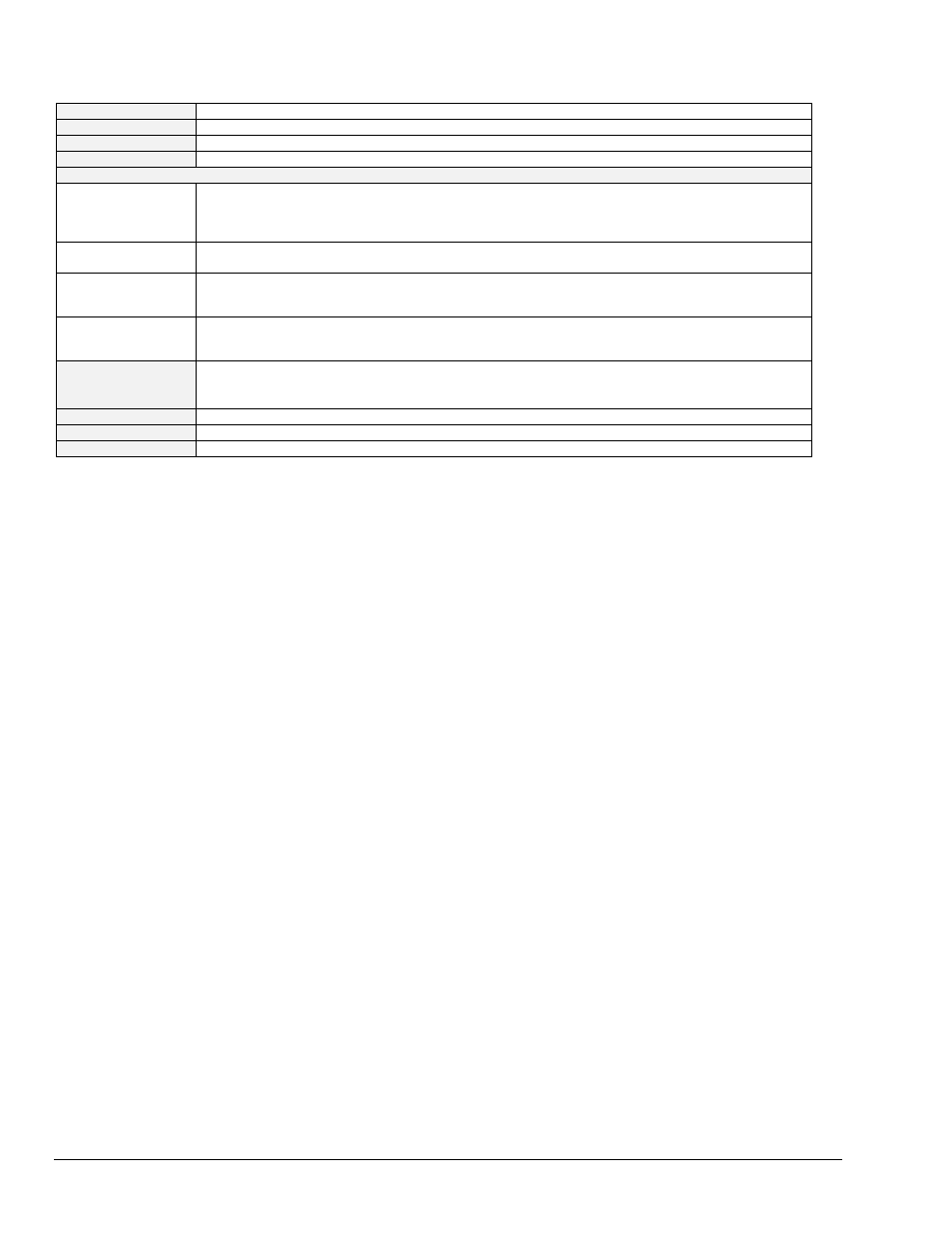Daqcvttcconvert – Measurement Computing TempBook rev.3.0 User Manual
Page 146

11-22 daqCommand Reference (Enhanced API)
TempBook User’s Manual
daqCvtTCConvert
DLL Function
daqCvtTCConvert(PWORD counts, DWORD scans, PSHORT temp, DWORD ntemp);
C
daqCvtTCConvert(PWORD counts, DWORD scans, PSHORT temp, DWORD ntemp);
Visual BASIC
VBdaqCvtTCConvert&(counts%(), ByVal scans&, temp%(), ByVal ntemp&)
Delphi
daqCvtTCConvert(counts:PWORD; scans:DWORD; temp:PWORD; ntemp:DWORD)
Parameters
counts
An array of one or more scans of raw data as received from the device. The ADC data bits are in the 12
most significant bits of the 16-bit integers, and the tag bits (which are discarded) are in the 4 least-
significant bits.
Valid range: Each raw data item may be any 16-bit value.
scans
The number of scans of data in
counts
array.
Valid range: 1 to 32768/nscan (counts is limited to 64 Kbytes).
temp
Variable array to hold converted temperature results. The integer values are 10 times the temperatures in
°C. For example, 50°C would be represented as 500 and -10°C would be -100.
Valid range: Results range from -2000 (-200°C) to +13720 (+1372°C) depending on the thermocouple type.
ntemp
The number of entries in the temperature array. This value is checked by the functions to avoid writing past
the end of the array.
Valid range: If avg is 0, then ntc or greater. If avg is non-zero, then scans * ntc or greater.
Returns
DerrTCE_NOSETUP
- Setup was not called
DerrTCE_PARAM
- Parameter out of range
DerrNoError
- No Error (also, refer to API Error Codes on page 11-39)
See Also
DaqCvtTCSetup, DaqCvtTCSetupConvert
Program References
None
Used With
All devices
daqCvtTCConvert
takes raw A/D readings and converts them to temperature readings in tenths of
degrees Celsius (0.1°C). The total number of conversions (scan * chans/scan) must be less than 32K. The
Daq* measures thermocouple temperatures by way of a TempBook that includes a cold-junction
compensation circuit (CJC) attached to channel 0. Channel 1 is shorted for performing auto-zero
compensation. Channels 2 through 15 accept thermocouples for temperature measurement. Up to 16
expansion cards may be attached to a single Daq* to measure a maximum of 224 (16×14) temperatures.
The software supports type J, K, T, E, N28, N14, S, R and B thermocouples.
Two software techniques (calibration and zero compensation) can be used to increase the accuracy of the
TempBook:
•
Software calibration uses gain and offset calibration constants, unique to each card, to compensate for
inherent errors on the card.
•
Zero compensation is a method by which any offset voltage on the card can be removed at run-time.
This is done by measuring a shorted channel at the same gain on the actual input to find the offset,
and subtracting this value from the actual reading.
The thermocouple linearization function has a special auto-zero compensation feature that will perform zero
compensation on the raw thermocouple data before linearizing when using a TempBook. The auto-zero
feature is enabled by default, but can be disabled using the daqAutoZeroCompensate function. It is
not available when using unipolar mode.
The temperature measurement conversion functions are designed for temperature measurement where:
•
The cold-junction compensation circuit (CJC) channel (channel 0) reading from the T/C card is
immediately followed in the scan sequence by the T/C channel readings, all of which must be from
the same type of T/C (including: J, K, T, E, N28, N14, S, R, or B).
•
If a TempBook is used with auto-zeroing enabled, the CJC channel reading described above must be
preceded by 2 readings from the shorted channel (channel 1). The first shorted reading must be at the
same gain setting as the CJC reading. The other shorted reading must be at the gain of the T/C to be
converted.
•
If software calibration is used with the TempBook, the calibration constants for the card to be used
should be entered into the calibration file.
•
The CJC and T/C readings are taken with the optimal gains (as described below).
•
All non-thermocouple data conversion, if any, must be done by other means.
